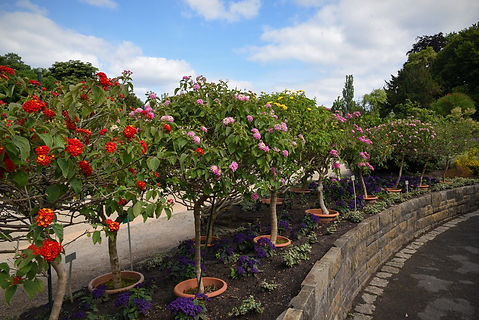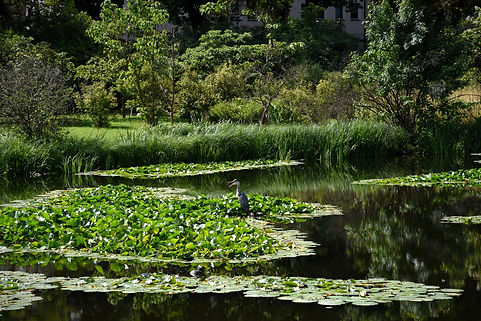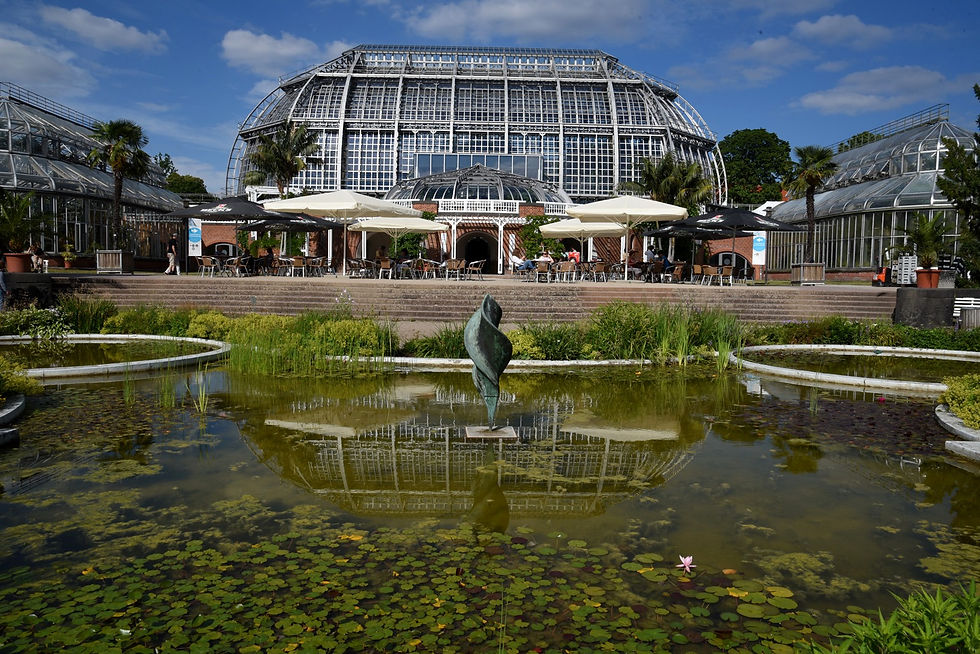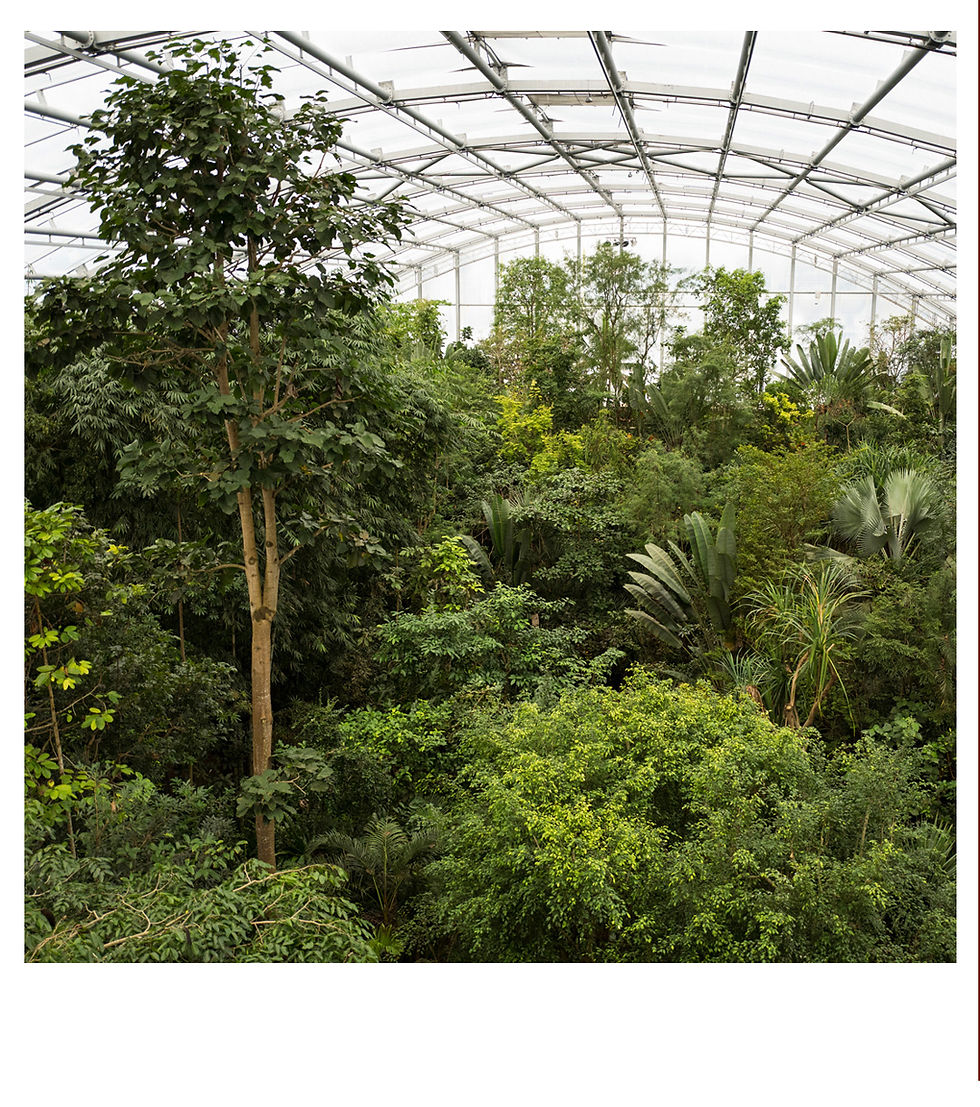GERMANY

BERLIN BOTANICAL GARDEN
The World
in a Garden
Photographs of Cristina Archinto
Text Carla De Agostini and Noa Terracina
The Berlin Botanical Garden with its 43 hectares and 22,000 plant species is a botanical institution and one of the largest in the world. Founded in 1679 as a place for growing vegetables, it then moved to the Lichterfelde district and underwent a significant transformation into a landscape garden between 1897 and 1910 under the direction of Adolf Engler whose motto was 'the world in a garden' referring to plant geography.

In fact, in one third of the entire outdoor area of the garden the plants are arranged in a phytogeographical order, i.e. by geographical area, so walking through this area is like walking around the world among the different endemic habitats corresponding to the various countries of the world, from forests to prairies and from the mountains of the United States to those of Asia. In the rock gardens, for example, the Appalachians of the Atlantic slope and the Californian Pacific mountains are represented. Then there is the Anatolian Plateau and then the Himalayas, where the vegetation of both the western slope characterised by long monsoon rains and the eastern slope with even wetter months and visible differences have been reproduced. Then we end in Japan, where Prunus, Magnolias, and various types of forest can be recognised, with for example Cryptomeria japonica and Sophora japonica.


But there are other outdoor areas that are also very interesting, such as an arboretum, which groups trees according to their natural relationships, a specific garden that sharpens your sense of smell and touch with interesting common and uncommon aromatic plants, a medicinal plant garden with about 230 types of plants arranged according to areas of application for certain diseases, a small Italian garden, and also marshes and water gardens with 200 plants, some of which are endangered.

Another very pleasant corner is the rose garden, which is very well maintained and has a remarkable collection of roses from all over the world. Finally, there is also the herbaceous plant zone, a research area that is also protected from visitors and contains some 80 endangered plants.

But the real highlight is the huge Tropical Greenhouse, declared a World Heritage Site, which has been the symbol of the Botanical Garden for over a hundred years, a remarkable example of 19th century glass and steel architecture. Today, it is still one of the most impressive and largest free-standing greenhouses in the world, housing more than 1,400 plant species. Destroyed in the autumn of 1943 during the war, it was rebuilt a first time in the 1960s, but it is only thanks to the latest renovation in 2009 with technological materials that it has become a completely state-of-the-art facility, resulting in considerable energy savings, with peaks of up to 70% in the air-conditioning systems, which are crucial in the greenhouses.

Divided into fourteen separate but all connected rooms, it has always been an enchantment for those who walk through it because of the overabundance of colourful plants and flowers of every type and species: from giant bamboos in the tropical greenhouse to ferns over 200 years old in the fern greenhouse to the orchid collection and carnivorous plants.

Succulents from the tropical and subtropical regions of the Old World also have their own greenhouse, dominated by the candelabrum-shaped Euphorbia species and aloes with their large fleshy leaves. The neighbouring greenhouse, on the other hand, presents a landscape of New World succulents, where mainly overgrown cacti, but also species such as agaves and other Crassulaceae reside.

The last arrival is the Victoria House, where in addition to the famous giant water lilies, such as the Victoria Amazonica, which with its imposing floating leaves can support a uniformly distributed weight of more than 100 kg, some species that, according to Frontiers Plants Biology, are endangered in certain parts of the world such as Bolivia due to the destruction of their habitat, are also studied here.

Another place of excellence is the Botanical Museum added in 1905 to the Botanical Garden complex: unique of its kind in all of Central Europe, it preserves not only the precious heritage of the historic royal herbarium and the Berlin herbarium, but also studies focusing on the interactions of living organisms with soil chemistry, physics and hydrology. This approach was inherited from the research of Adolf Engler, famous for his approach to plant taxonomy, based on evolutionary schemes inspired by Charles Darwin, to which he added the importance of geographical distribution: the idea that plants adapt to climatic conditions, forming communities. In those years, the term biotope was soon to be used, i.e. minimum territorial units that allow the development of living organisms, plants and animals, with certain physical-chemical-climatic characteristics; a crucial concept for the development and knowledge of habitats, environmental climates and today's ecology. For this reason, a visit to the museum is dedicated not only to the ancestry of plants, types of vegetation and their different environments, but also to the influence of the environment and climatic conditions on plant morphology.

The Berlin Botanical Garden is truly a crossroads of knowledge and biodiversity, a place of study and research, but also a place of hospitality for anyone who wants to stroll through it and breathe air from all over the world. There is no season that is not distinguished by its colours, scents, or scenery, and every excuse is good to drop by.
FEATURED
THE VICTORIA AMAZONICA
The Victoria Amazonica is a name that conjures up those huge leaves floating on the water. But not everyone knows that it was the morphology of this unique water lily that inspired the Crystal Palace greenhouse at Kew in London in 1851, made of iron and glass. The idea starts from the strength of the leaf, whose ribs on the lower face, organised like a system of buttresses, can support up to 100 kg of evenly distributed weight. The rigid radially symmetrical centric leaves covered with strong spines are reinforced by several concentric and flexible ribs distributed in opposite directions, a morphological feature that recurs in the construction solution of the Crystal Palace. But the fascination of the Victorias does not stop there; their enormous flowers can reach up to 30 cm in diameter, and they only bloom for one day and two nights. On the first evening, at dusk, a large, thorn-covered bud opens and a white flower appears, which, thanks to a thermodynamic reaction, raises its internal temperature 11 degrees above the ambient temperature. This released heat and a pineapple-like scent attract beetles, which at dawn, when the flower closes, become trapped in it. But as they are not carnivorous plants, they do not die, but rather spend the day there feeding on the starch-rich floral appendages. On the second night the flower changes colour, and takes on shades of pink or red, and at dusk releases the insects, which, soaked in pollen, go on to fertilise another flower. At dawn on the second day, the flower withers, closes and dips, and it is there that the fruit ripens.

Link
Victoria Greenhouse
GALLERY

































